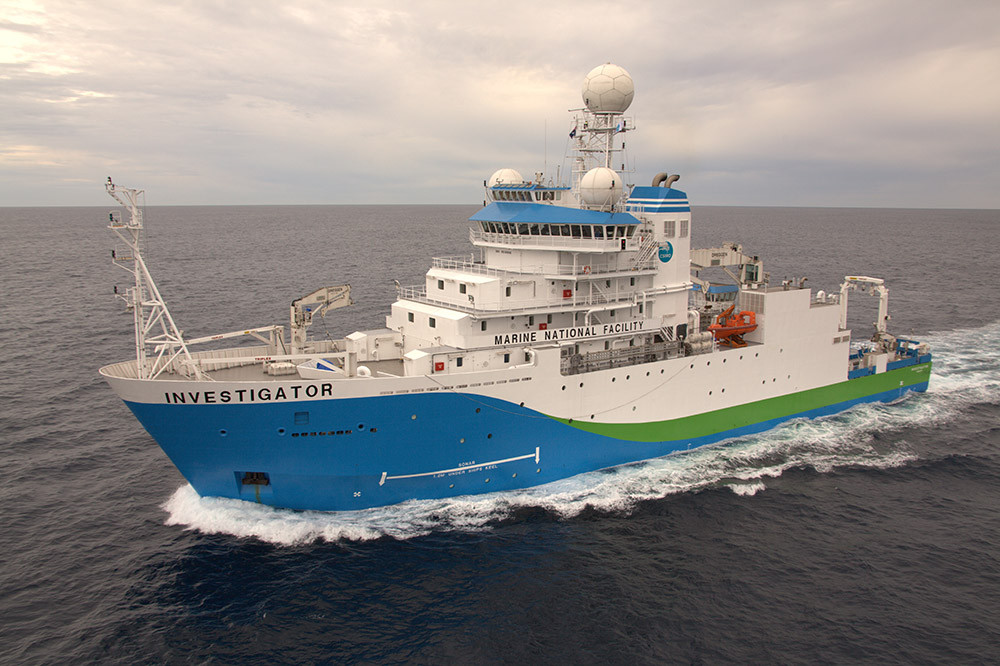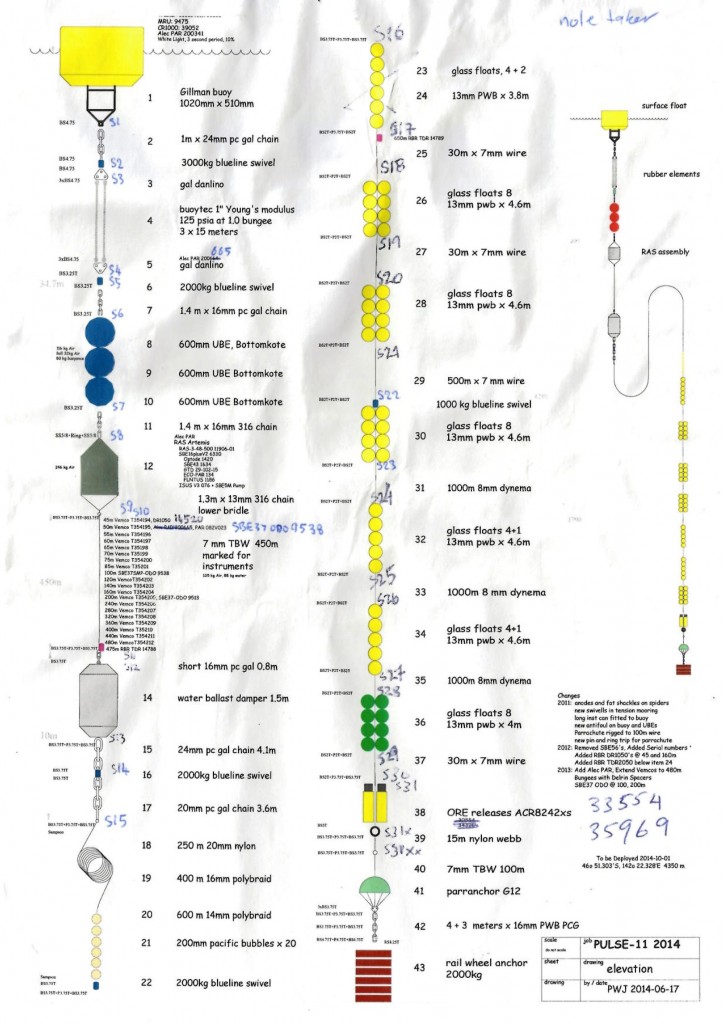ACE NEWS - APRIL 2015
ACE science front and centre on maiden Investigator voyage

Early on the morning of March 21, the RV Investigator left the Port of Hobart on its first commissioned science voyage.
Led by ACE CRC Oceanographer, Professor Tom Trull, the 49 scientists and crew on board were setting out to find answers to some of the most challenging questions in climate science today.
Among those questions is clouds and their role in climate change - where our scientists have made an interesting and important discovery.
This was also the ACE CRC’s first major scientific collaboration with the Bureau of Meteorology since Australia’s weather agency re-joined our partnership last year.
For the ACE CRC, the voyage has clearly demonstrated the immense value of the Bureau’s partnership with the CRC and the enhanced science opportunities that the new Marine National Facility vessel brings.
Among the key tasks for the voyage was the deployment of three new high-precision deep-water moorings at a carefully chosen location in the sub-Antarctic zone south-west of Tasmania, close to the 47th parallel in the Southern Ocean.
This new monitoring equipment, which forms part of Australia’s Integrated Marine Observing System, is capable of measuring a large array of ocean properties including temperature, salinity, currents, waves, and biological biological activity, as well as atmospheric conditions.

For climate scientists, one of the most important functions of the largest mooring (see photo) lies in its ability to measure the air-sea heat flux – or the rate at which the ocean absorbs heat from solar radiation and the surrounding atmosphere.
For the next 12 months this data on heat transfer will be relayed back via satellite, where it can be viewed in real time on the IMOS website.
When the moorings are hauled from the water in 12 months time, a vast amount of additional data stored on board will be downloaded.
We expect this new data will give us unprecedented insights into the ways that climate change is affecting the physical, chemical and biological properties of the Southern Ocean.

Cloud gazing: Weather Radar Makes a Surprising Discovery
One of the most important and least understood factors controlling ocean heat uptake is the clouds.
Depending on their altitude and their specific properties, clouds can have a dramatic effect on the rate at which solar heat radiation is transferred into the ocean.
Scientists have long known that clouds play a central role in climate change, however clouds remain one of the most difficult elements of the climate system to measure and predict with accuracy.
Clouds remain the single greatest source of uncertainty in current models for predicting the climate.
The RV Investigator has been deliberately well equipped for measuring clouds, using a highly specialised weather radar located inside the “soccer-ball” on the ship’s main mast.
In addition, an upward looking radar was installed specifically for this voyage by the BOM, under the leadership of Dr Alain Protat.
The BOM radar is able to send 800 microwave pulses every second and collect data within a 150 km radius of the ship and 20 km into the atmosphere.
One of the most surprising and interesting early findings came when the research team pointed the BOM radar into the Southern Ocean sky, as Dr Protat explains:
“We used the upward-looking cloud radar to get profiles of cloud distributions with altitude above the sea surface, at the same time as the air-sea flux mooring was giving us precise measurements of the incoming shortwave and longwave radiative fluxes.”
“We were able to get readings from all these systems at the same time, which in turn allowed us to get a very precise understanding of the radiative impact of these clouds.”
“This is the first time that anyone has been into the Southern Ocean to take these observations.”
“But the real surprise came when we compared our own radar cloud measurements with the cloud radar data collected by a satellite passing overhead.”
“What we found was that the satellite simply was not seeing the lower level clouds that sit in the bottom kilometre and a half of the atmosphere.”
“Now that we know this, it is potentially very important to our understanding of the rate of heat uptake, because we know that these low level clouds are more common in the Southern Ocean than elsewhere in the world.”
“Low altitude clouds play a key role in trapping heat into the ocean, so if we want to quantify that and understand how and why that is happening, we need to understand what the clouds are doing in the lower atmosphere.”
“If the satellites are not picking up low-level cloud over the Southern Ocean that’s something that climate models will need to account for.”
Knowing this information is very important because more than 90% of the heat trapped in the atmosphere by our CO2 emissions enters the ocean.
It is difficult to over-state the importance of the Southern Ocean in this process.
This massive body of water acts as a sort of ‘brake’ on the rate of climate change, by absorbing a disproportionately large share of the additional heat and the carbon dioxide produced by human activities.
Powerful deep water currents originating in the Southern Ocean circulate water throughout the world’s oceans and regulate atmospheric temperatures in all parts of the globe.
Understanding the processes driving the uptake of heat and carbon dioxide by the ocean is therefore crucial. A complex interplay of physical, chemical, atmospheric and biological processes controls this process, but we don’t yet fully understand how these processes interact.
At the heart of this research is one of the most urgent questions facing climate science today: can our oceans continue to absorb ever-increasing amounts of heat and carbon dioxide, or will their capacity to provide these services taper off? And, if so, what will be the consequences?
A diagram of the PULSE-11 mooring deployed in the Southern Ocean























